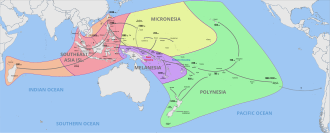Mariana Islands
Mariana Islands
The Mariana Islands are a crescent-shaped archipelago located in the western Pacific Ocean, forming part of the Micronesia subregion. This chain of volcanic islands and islets spans over 400 miles from the southernmost island of Guam—an unincorporated territory of the United States—to the northernmost island of Farallon de Pajaros, part of the Commonwealth of the Northern Mariana Islands (CNMI), a self-governing territory of the U.S. The Mariana Islands are divided politically into these two jurisdictions: Guam and the CNMI. The indigenous people of the Mariana Islands are known as the Chamorro people, who have inhabited the islands for thousands of years.
History
The Mariana Islands have a rich history that dates back to around 1500 BC, with the earliest evidence of human activity found on the islands. The first European contact was made in 1521 by the Portuguese explorer Ferdinand Magellan, sailing under the Spanish flag. The islands were later claimed by Spain and remained under Spanish control until the Spanish-American War in 1898, when Guam was ceded to the United States. The remaining islands were sold to Germany in 1899, then seized by Japan during World War I, and finally became a part of the Trust Territory of the Pacific Islands under United Nations auspices after World War II, before becoming a self-governing territory of the U.S. in 1978.
Geography
The Mariana Islands consist of 15 major islands, divided into the southern and northern groups. The southern islands are predominantly limestone with fringing coral reefs, while the northern islands are volcanic, with the active volcano Mount Pagan and the submerged volcano Mariana Trench—the deepest oceanic trench on Earth. The climate is tropical marine, with little seasonal temperature variation but a pronounced rainy season from July to October.
Economy
The economy of the Mariana Islands is heavily dependent on tourism, especially on Guam and Saipan. Other significant economic activities include agriculture, fishing, and the garment manufacturing industry, although the latter has declined due to global competition. The U.S. military presence is also a significant aspect of the economy, particularly on Guam.
Culture
The culture of the Mariana Islands is a blend of indigenous Chamorro culture, Spanish, Japanese, and American influences. Traditional Chamorro culture is evident in the local language, music, dance, and cuisine. The annual Fiesta celebration is a significant cultural event, showcasing the islands' rich heritage and traditions.
Environmental Concerns
The Mariana Islands face several environmental challenges, including the threat of climate change, rising sea levels, and the preservation of its marine and terrestrial ecosystems. Efforts are being made to protect the unique flora and fauna of the islands, including the endangered Mariana fruit bat and the Mariana crow.
Transform your life with W8MD's budget GLP-1 injections from $125.
W8MD offers a medical weight loss program to lose weight in Philadelphia. Our physician-supervised medical weight loss provides:
- Most insurances accepted or discounted self-pay rates. We will obtain insurance prior authorizations if needed.
- Generic GLP1 weight loss injections from $125 for the starting dose.
- Also offer prescription weight loss medications including Phentermine, Qsymia, Diethylpropion, Contrave etc.
NYC weight loss doctor appointments
Start your NYC weight loss journey today at our NYC medical weight loss and Philadelphia medical weight loss clinics.
- Call 718-946-5500 to lose weight in NYC or for medical weight loss in Philadelphia 215-676-2334.
- Tags:NYC medical weight loss, Philadelphia lose weight Zepbound NYC, Budget GLP1 weight loss injections, Wegovy Philadelphia, Wegovy NYC, Philadelphia medical weight loss, Brookly weight loss and Wegovy NYC
|
WikiMD's Wellness Encyclopedia |
| Let Food Be Thy Medicine Medicine Thy Food - Hippocrates |
Medical Disclaimer: WikiMD is not a substitute for professional medical advice. The information on WikiMD is provided as an information resource only, may be incorrect, outdated or misleading, and is not to be used or relied on for any diagnostic or treatment purposes. Please consult your health care provider before making any healthcare decisions or for guidance about a specific medical condition. WikiMD expressly disclaims responsibility, and shall have no liability, for any damages, loss, injury, or liability whatsoever suffered as a result of your reliance on the information contained in this site. By visiting this site you agree to the foregoing terms and conditions, which may from time to time be changed or supplemented by WikiMD. If you do not agree to the foregoing terms and conditions, you should not enter or use this site. See full disclaimer.
Credits:Most images are courtesy of Wikimedia commons, and templates, categories Wikipedia, licensed under CC BY SA or similar.
Contributors: Prab R. Tumpati, MD






